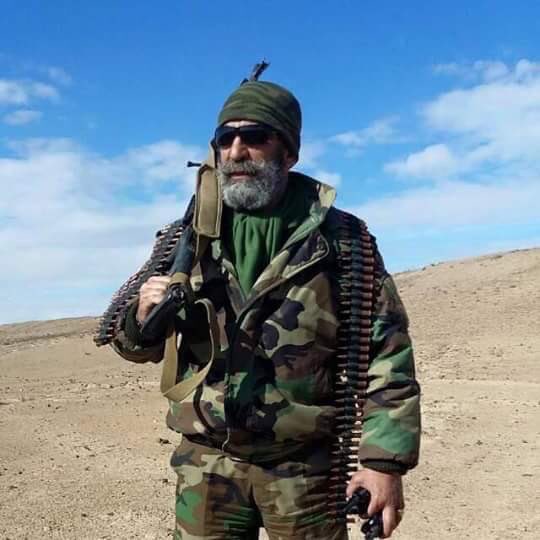President Donald Trump on Saturday ordered military leaders to give him a report in 30 days that outlines a new strategy for defeating the
terrorist group.
"This is the plan to defeat the Islamic State of Iraq and Syria, in other words ISIS," he said as he signed the order. "I think it's going to be very successful. That's big stuff."
The plan is expected to include recommendations on changes to military actions, diplomacy, coalition partners, mechanisms to cut off or seize the group's financial support and a way to pay for the strategy, according to the language released by the White House.
He charged Defense Secretary James Mattis with developing a plan with the help of the secretaries of State, Treasury and Homeland Security, the director of national intelligence, the chairman of the Joint Chiefs of Staff, the assistant to the president for national security affairs and the assistant to the president for homeland security and counter-terrorism.
Trump signed the document hours after speaking to Russian President Vladimir Putin for about one hour about working together to fight terrorism, resolve the conflict in Syria and restore economic ties. It was the first call between the two since Trump became president, though he was criticized during the campaign for being too friendly with Putin.
"The positive call was a significant start to improving the relationship between the United States and Russia that is in need of repair," according to the White House. "Both President Trump and President Putin are hopeful that after today's call the two sides can move quickly to tackle terrorism and other important issues of mutual concern."
The two leaders also discussed the Israeli-Palestinian conflict, Iran's nuclear program and Ukraine, according to the Kremlin.
Trump also spoke to a series of other world leaders on Saturday, including Japanese Prime Minister Shinzo Abe, German Chancellor Angela Merkel, French President Francois Hollande and Australian Prime Minister Malcolm Turnbull.
The Islamic State order was expected. Trump had spoken about implementing a new plan to defeat the Islamic State, also called ISIS, at a campaign appearance in North Carolina in September.
"We are going to convey to my top generals and give them a simple instruction," Trump said at the time. "They will have 30 days to submit to the Oval Office a plan for soundly and quickly defeating ISIS. We have no choice."
How that plan will differ from what the U.S. military is doing now to combat the Islamic State remains to be seen. While Mattis is new to his job, the same field commanders who've conducted American military strategy in Iraq and Syria since 2014 remain in place, as do many of the diplomats.
The United States has gradually increased its manpower commitment to the fight, and special operations forces are known to be on the ground in both Iraq, where they are advising Iraqi forces on their efforts to retake Mosul, and Syria, where several hundred are believed to be accompanying Kurdish forces battling ISIS in northern Iraq.
In addition, the U.S. military maintains a hotline connection to Russian forces, who also are fighting in Syria, in an effort to prevent accidental conflict between the two sides.
One noticeable, if cosmetic, change: Trump referred to the group as ISIS, the Islamic State of Iraq and Syria, and not ISIL, the Obama administration's preferred acronym for the group, which stands for the Islamic State of Iraq and the Levant.
On the campaign trail, Trump had criticized the Obama administration for its handling of the Islamic State and declared that he knows more than generals about the group.
Late Friday, Trump also ordered the military to what he called a "a great rebuilding" of the military, including planes and ships.
"As we prepare our budget request for Congress, and I think Congress is going to be very happy to see it, our military strength will be questioned by no one, but neither will our dedication to peace," he said. "We do want peace."
Trump had proposed increasing the
to 540,000, up about 65,000; the
to 36 battalions, up from 24; the
to 350 surface ships and submarines from the current 280, the number of
fighter aircraft to 1,200 from from what he pegged at 1,113; and developing a state-of-the-art missile system. He said he would boost spending to pay for the buildup, lifting spending caps known as the sequester that passed with bipartisan support in 2013.
Trump had said he would offset the military buildup by eliminating federal waste, fraud and abuse, which politicians have cited for decades as a way to cut spending but that has routinely either been rejected or fallen far short of the goals.
On Saturday, Trump also called for a reorganization of the National Security Council and Homeland Security Council.
"This is the organization of the National Security Council and the Homeland Security Council, you know pretty much what it represents, it represents a lot, and also a lot of efficiency and I think a lot of additional safety," he said. "People have been talking about this for a long time, like many years."
He also restricted members of his administration from becoming lobbyists for five years after they leave government, and banning them from lobbying foreign governments. President Barack Obama had a two-year limit in place.








